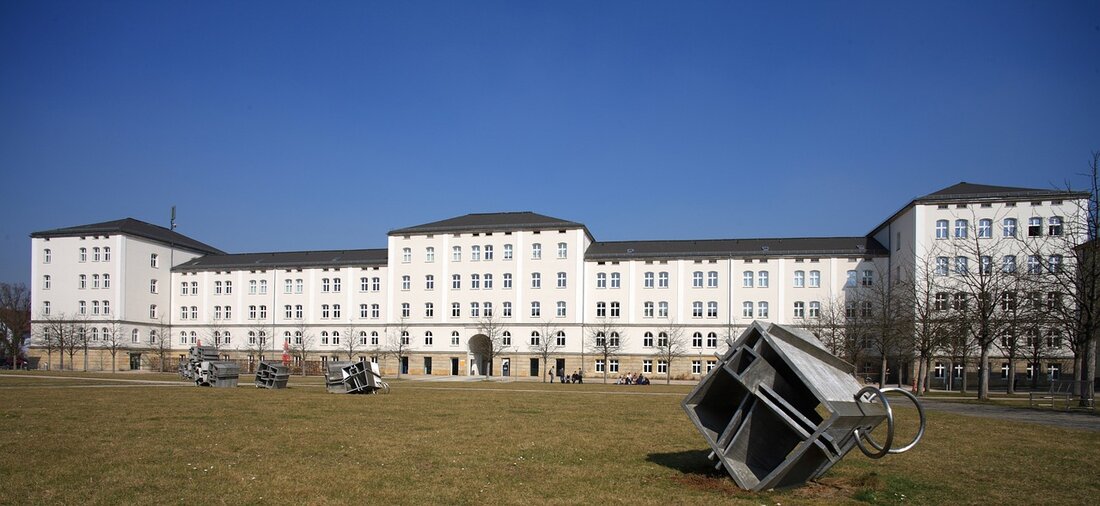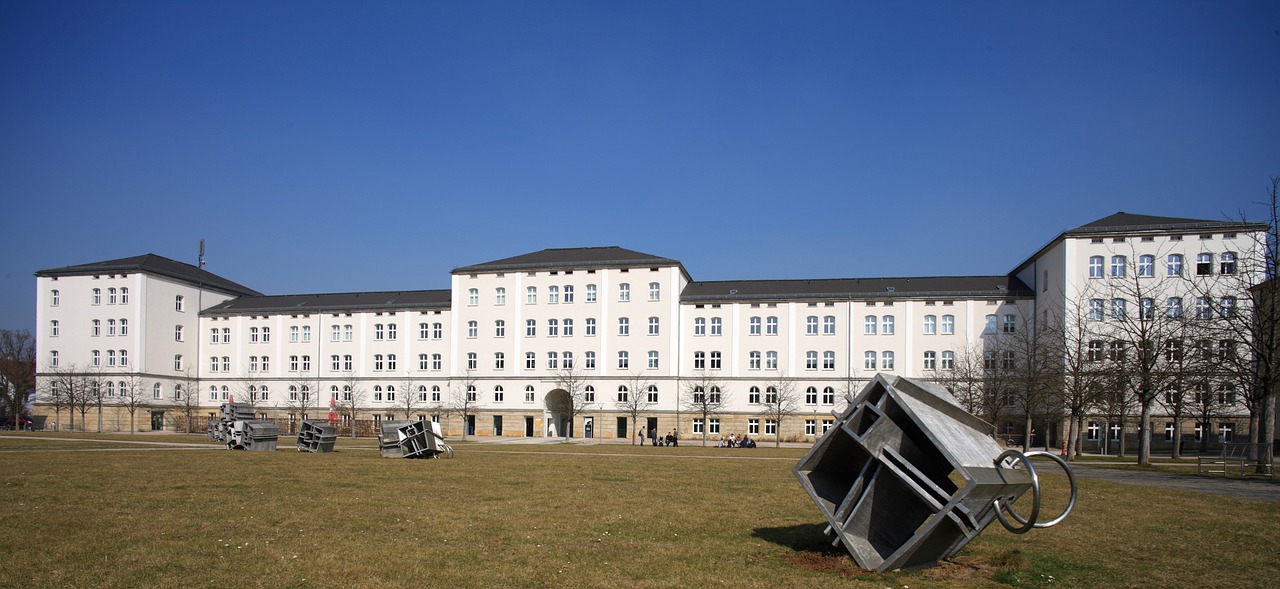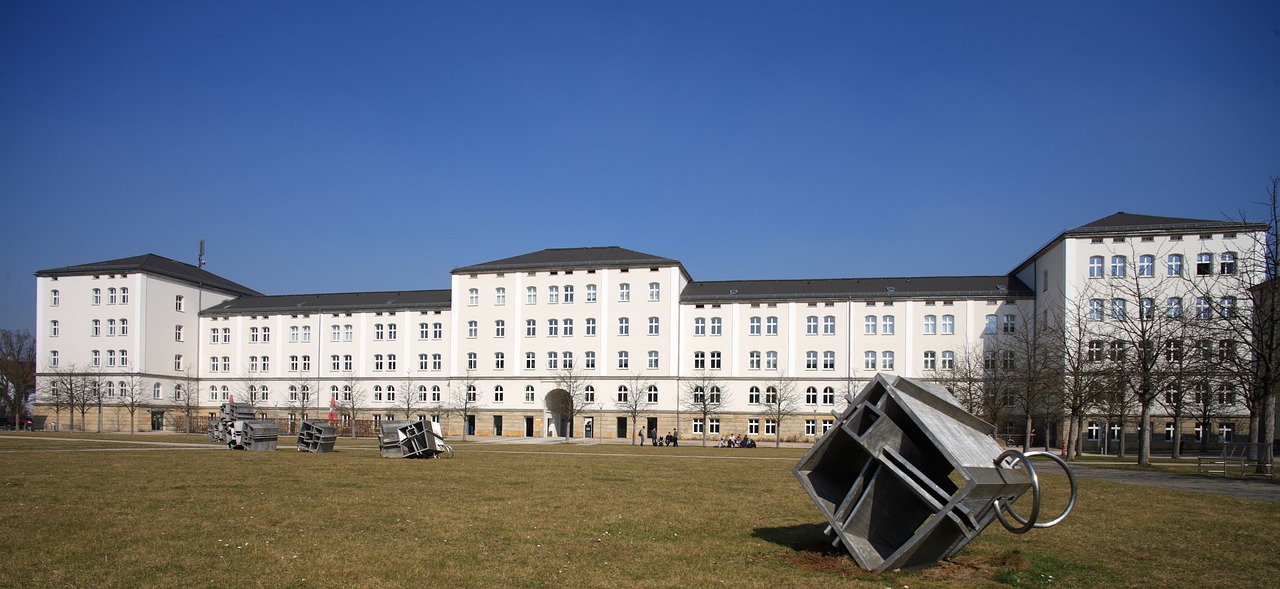Discover Amberg: history, enjoyment and culture in the heart of Bavaria!
Discover Amberg in Bavaria: a city full of history, sights, cultural events, regional cuisine and traditional customs.

Discover Amberg: history, enjoyment and culture in the heart of Bavaria!
Nestled in the heart of the Upper Palatinate is Amberg, a charming city in Bavaria, which inspires both tourists and locals with its rich history and its unique flair. Often referred to as the "pearl of the Upper Palatinate", Amberg offers a fascinating mix of medieval architecture, lively culture and Bavarian cosiness. The city, which is flowed through by the picturesque Vils, invites you to immerse yourself in times and at the same time enjoy the pulsating life of the present. Whether you explore the historical alleys or take part in traditional festivals - Amberg has something to offer for everyone. This article takes you on a journey through the best -known sights that attract visitors, and at the same time illuminates the regional peculiarities that shape the life of the Amberger and give the city their distinctive identity.
Introduction to Amberg

Amberg, a picturesque city in the Upper Palatinate, Bavaria, looks back on over a thousand -year history that makes it a fascinating place for those interested in history and cultures. For the first time in 1034, Amberg developed into an important trading center in the Middle Ages, especially for iron ore and iron products. The city was a central point of the iron ore mining between the 14th and 17th centuries and acted as an envelope for iron, iron ore and salt, as is still visible today through its belonging to the "Bavarian Eisenstrasse", the industrial and cultural monuments linked (Global Geography).
Politically and historically, Amberg experienced numerous turning points. In 1269, the city was subordinate to the Wittelsbach gender together with Bamberg, and in 1329 it fell on the Palatinate branch of this family, causing the region to get the name Oberpfalz. Although Amberg was no longer part of the Duchy of Bavaria politically, it is viewed geographically and culturally to this day. In the 16th century, the Upper Palatinate turned to Protestantism, and Amberg became Lutheran. However, attempts by the rulers to introduce Calvinism failed due to the resistance of the citizens. In 1628 Amberg finally became part of the Electorate of Bavaria, whereby the residents were faced with the election to return to Catholicism or to emigrate - many families opted for the latter and moved to the free imperial cities of Regensburg and Nuremberg (Wikipedia).
The city also played a role in warlike arguments. On August 24, 1796, the Battle of Amberg took place during the French Revolution, in which 35,000 French soldiers under Jean Baptiste Jourdan fought against 40,000 Austrians under Archduke Karl. By 1810, Amberg was also the capital of the Upper Palatinate before this function was transferred to Regensburg. After the Second World War, the city housed the Pond Barracks, a barracks of the US Army, which was in operation until 1992. The Amberg attacks have recently caused a sensation in 2018 that triggered an emergency in the city and were concerned with politicians such as the Bavarian Interior Minister Joachim Herrmann and the then Federal Minister of the Interior Horst Seehofer.
Another important aspect of city history is the Jewish community, whose presence in Amberg is documented before 1294. As early as 1298, 13 Jews were killed during the beef massacre, and although six Jewish families were given permission to settle in 1347 and a Yeschiwa was opened in 1367, the municipality was driven out of the city in 1403. At that time, the synagogue was attached to the neighboring church. In 1942 only twelve Jews lived in Amberg, but after 1945 some survivors returned. Jewish refugees in particular took up a nearby camp for Displaced Persons. By immigration from the former USSR, the Jewish population grew to around 275 people until 2003, and today there is again a synagogue in the city that enriches cultural life.
Architecturally, Amberg reflects its eventful history. The Gothic town hall, whose construction began in the 14th century, is an impressive testimony of medieval architecture. The west facade with its richly decorated gable also emerged during this time, while supplements and conversions continued to shape the building in the 16th and 18th centuries. The town hall symbolically stands for the economic and cultural importance of Amberg in the region and is now a popular starting point for visitors who want to experience the historical atmosphere of the city.
Amberg's history is characterized by change - be it by political upheavals, religious conflicts or economic developments. The city understood to preserve its past and at the same time look into modernity. For locals, Amberg is not only a place of history, but also a living space in which tradition and the present go hand in hand. For visitors, the city offers a unique opportunity to immerse yourself in the multifaceted history of the Upper Palatinate and to experience the traces of past epochs up close.
Tourist highlights

Amberg, embedded in the picturesque Upper Palatinate, is a real jewel for visitors who appreciate historical cities and cultural diversity. The well -preserved old town, surrounded by a full city wall ring, which is about three kilometers long and comprises 97 doors and gates, invites you to take extensive walks. The four accessible city gates - Nabburger Gate, brick gate, Vilstor and Wingershofer Tor - are particularly impressive, each telling their own history. The Nabburger Gate, the oldest of the gates, leads back to the train station, while the Wingershofer Tor, built in 1580, is the smallest of the four. Another landmark is the so -called city glasses, a water portal from 1454, which spans the Vils between the new castle and the Zeughaus and offers a unique view of the city (Discover Bavaria).
One of the most important sights is the historic town hall, a Gothic masterpiece that reflects the rich past of Amberg. The Church of St. Martin, the architecture and history of which captivates visitors under its spell. The Maria Hilf pilgrimage church on the Mariahilfberg not only offers spiritual contemplation, but also a beautiful park landscape that was once part of the state garden show. For those interested in history, the Amberg City Museum is a must that gives an insight into the regional past as a pre -history museum of the Upper Palatinate. Art lovers, on the other hand, should not miss the Air Museum, which has been devoted to contemporary art since its opening in 2006 and the topic of air - an award as an air -state center in 2009 underlines this special feature.
The Amberg City Theater, which was opened in the former Franciscan monastery in 1803 and presented a varied program annually, also offers cultural highlights. If you want to experience the city from a different perspective, you should take a city tour or take part in a traditional “Vils tiles” caravan on the Vils. These boat trips not only offer relaxation, but also exciting insights into the history of the city, while you are gliding past historical buildings and bridges (Bayern worth seeing).
Amberg is also well equipped for leisure activities. The electoral pool, a modern wellness and adventure pool, invites you to relax, while the heated outdoor pool stool baths cause cooling on warm days. Sports enthusiasts can use the numerous cycle paths, including the five-river cycle path, the Schweppermann cycle path or the Bavarian Bohemia cycle path. Canoe tours on the Vils, mini golf courses, bowling alley, a glider airfield and an ice rink also offer a variety of ways to become active. These offers make Amberg an ideal goal for families and outdoor enthusiasts who want to combine nature and sport with cultural experiences.
In addition to the attractions for tourists, Amberg also has a lot to offer for locals, especially due to its deeply rooted traditions. A highlight in the cultural calendar are the Kirwa celebrations that stand for consecration and are celebrated in around 120 villages in the region. These festivals, which were recognized as an intangible cultural heritage in 2023, contain traditional dances and music and are an integral part of life in the Upper Palatinate. They reflect the close connection between the Amberger with their history and customs and also offer visitors the opportunity to experience authentic Bavarian culture up close.
Another regional highlight is the city's brewing culture. With five medium -sized breweries and a home brewery, Amberg is a paradise for beer lovers. The local breweries produce traditional Bavarian beers, which are often enjoyed at festivals and in the city's cozy taverns. This brewing tradition, coupled with the warm hospitality of the Amberger, makes a visit to one of the beer gardens or taverns an unforgettable experience that reflects the soul of the city.
Amberg thus unites historical splendor in a unique way with modern leisure opportunities and deeply rooted traditions. Whether you explore the imposing city wall, immerse yourself in history or take part in local festivals - the city offers something for every taste. For tourists, Amberg is a window in the past, for locals a home full of pride and sense of community, which preserves its cultural identity with passion.
Cultural events

Amberg in the Upper Palatinate is not only known for its historic old town and impressive sights, but also for a lively event program that meets the city all year round with energy and joy. Festures and events play a central role in the life of the Amberger and offer both locals and tourists the opportunity to experience Bavarian culture and community up close. From traditional celebrations to modern events - Amberg has something to offer for every taste and shows its multifaceted identity.
One of the cultural highlights are the Kirwa celebrations that are deeply rooted in the region. Kirwa, short for church consecration, is celebrated in about 120 villages of the Upper Palatinate and stands for the consecration of the local churches. These festivals, which were recognized as an intangible cultural heritage in 2023, are shaped by traditional dances, music and festive atmosphere. In Amberg and the surrounding communities, families and friends gather to celebrate together, often accompanied by brass bands and traditional costume groups. For visitors, the Kirwa offers an authentic insight into the Bavarian way of life, while it is an important occasion for locals to maintain its roots and strengthen the community (Discover Bavaria).
Another big event is the Amberg old town festival, which attracts thousands of guests to the historic city center every year. This festival transforms the alleys and squares into a colorful festival mile with live music, regional specialties and a diverse program for young and old. Local clubs and retailers present their products, while visitors have the opportunity to enjoy traditional dishes such as sausages, pretzels and of course the famous Amberger beer. The old town festival is not only a magnet for tourists, but also a meeting point for the Amberger, who show and celebrate their city here from their most lively side.
In Advent, Amberg turns into a magical winter world with the traditional Christmas market. On the market square, surrounded by festively decorated half -timbered houses, numerous stands offer handmade gifts, Christmas decorations and delicious treats such as gingerbread and mulled wine. The festive lighting and the fragrance of roasted almonds create a contemplative atmosphere that puts visitors in the Christmas mood. For locals, the Christkindlmarkt is a popular meeting place to get in the mood for the holidays with friends and family, while tourists take the opportunity to experience the city in its winter shine.
In addition to these traditional festivals, there are also modern events in Amberg that underline the cultural diversity of the city. The Amberg City Theater, which is located in a former Franciscan monastery, offers a varied program with over 100 events all year round, including plays, concerts and cabaret. These events not only attract a local audience, but also those interested in culture from all over the region. For the Amberger, the theater is a place of encounter and cultural exchange, while it offers visitors a welcome opportunity to get to know the artistic side of the city.
The numerous beer festivals that celebrate Amberg's brewing tradition are also a special experience. With five medium -sized breweries and a home brewery, the city is a paradise for beer lovers. These festivals, often held in the summer months, offer the opportunity to try regional beer types and to learn more about the long history of brewing in the Upper Palatinate. The cozy atmosphere in the beer gardens and taverns invites you to linger and shows the warm hospitality of the Amberger. For locals, these events are an integral part of social life, while they offer an authentic insight into the Bavarian beer culture for tourists.
In addition, smaller events take place regularly in Amberg, such as flea markets, craft markets and sporting events that strengthen the sense of community. Especially bike tours and canoe trips on the VILS, which often take place as part of organized events, combine leisure fun with the exploration of the picturesque environment. These activities address both locals who want to rediscover their homeland, as well as visitors who want to actively experience the nature and culture of the region.
The festivals and events in Amberg are a reflection of the city: traditional, warm and full of life. They bring people together, promote the exchange between generations and cultures and make Amberg a place where you immediately feel welcome. Whether you experience the Kirwa as a tourist or meet old friends as a local at the old town festival - these events are the heart of urban life and give Amberg its distinctive charm.
Regional cuisine

Amberg in the Upper Palatinate is not only a place of rich history and impressive sights, but also a paradise for connoisseurs who appreciate Bavarian cuisine and regional specialties. The city's gastronomic landscape reflects the traditions of the region and offers a variety of culinary experiences both locals and tourists. From hearty main dishes to sweet delicacies - everyone in Amberg gets their taste, while the warm hospitality of the local taverns and restaurants ensures unforgettable moments.
Bavarian cuisine, which plays a central role in Amberg, has its roots in the rural lifestyle and is known for its hearty and hearty dishes. Typical dishes such as roast pork, pork knuckle or liver cheese are omnipresent here and are often served with classic side dishes such as Bavarian herb or bread dumplings. The white sausage, which is traditionally enjoyed with sweet mustard and a pretzel, is also particularly popular. These dishes that vary depending on the season - easier in summer, hearty in winter - are not only valued by the Ambergers, but also attract visitors who want to try authentic Bavarian delicacies (Bavarian specialties).
Another highlight of regional cuisine is the snack, a typical Bavarian snack that is perfect for sociable rounds or picnics. A classic snack slab in Amberg often includes cold meat, various sausages, radi (radish), radiesian (radishes) and the famous Obatzda, a spicy cheese specialty from camembert, butter and spices. This simple but delicious meal is often served in beer gardens or traditional taverns and is a popular snack for locals that promotes the community. For tourists, the snack offers an uncomplicated way to get to know the variety of regional products.
In addition to the hearty dishes, Amberg also has sweet temptations to offer. Bavarian pastries such as moving (a kind of fried pastry) or steam noodles, which are often served with vanilla sauce, are popular with young and old. Another dessert that should not be missed in the region is the Bavarian cream, a creamy dessert that combines elegance and tradition. These desserts can often be found on the menus of local inns and round off a typical Bavarian menu perfectly. They show that the cuisine of the Upper Palatinate is not only hearty, but also versatile.
An indispensable component of Amberg's gastronomic culture is the beer, which not only plays a role as an accompanying drink, but also as an ingredient in many dishes. With five medium -sized breweries and a home brewery, the city is a center of Bavarian brewing. Local beers that are often brewed according to traditional recipes accompany the hearty dishes and are omnipresent at festivals and in taverns. For visitors, a visit to one of the beer gardens is a must to discover the variety of beers, while locals appreciate these places as meeting points for social get -together.
The gastronomic tradition in Amberg is also cultivated by family -run inns that offer a connection between tradition and modernity. An example of this is the philosophy of restaurants that concentrate on conveying a feeling of well-being to their guests, as can also be found in the Hotel-Brewery Gasthof Amberger near the region. Such houses value neat Bavarian cuisine and personal service, which makes your stay a special experience. They not only offer delicious dishes, but also rooms for festivals and events that strengthen the community (Amberger Hotelgasthof).
For locals, Amberg's cuisine is an expression of its identity and history. Many family recipes are passed on from generation to generation, and local markets offer fresh ingredients that form the basis for traditional dishes. For tourists, on the other hand, the city's gastronomy is an invitation to discover the culture of the Upper Palatinate through the palate. Whether in a rustic inn, a modern restaurant or at one of the many festivals - Amberg's culinary specialties tell stories of tradition, craft and community.
Amberg's gastronomic peculiarities make the city a place where food is more than just food - it is an experience that connects people. The combination of hearty Bavarian classics, sweet treats and first -class beer creates an atmosphere that inspires both locals and visitors alike. In Amberg, each bite becomes a journey through the rich culture and history of the region.
Nature and leisure

Amberg in the Upper Palatinate is not only known for its historic old town and cultural events, but also a paradise for nature lovers and outdoor enthusiasts. The city and its surroundings offer a variety of parks, hiking trails and leisure activities, which are particularly popular with locals to escape everyday life and enjoy the beauty of the region. These green oases and activities not only promote the quality of life of the Amberger, but also invite visitors to actively experience the nature of the Upper Palatinate.
One of the best -known retreat is the LGS Park, an approximately 25 hectare landscape park, which with its well -kept gardens, walking paths and a playground is a popular destination for families and those seeking relaxation. In summer, cultural events are often organized here, ranging from concerts to small festivals. For locals, the park is a place to meet friends or simply enjoy the peace, while children use the open spaces for games. A tip for visitors: Find out in advance about planned events to see the park's full program (Triplyzer).
Also a highlight is the extinguishing pond system, another amusement park that scores with an idyllic lake and various sports facilities. Especially in the summer months, the park attracts many Amberger who walk here, jogging or participating in cultural events. The lake offers a picturesque backdrop for relaxed hours, and the surrounding green areas are ideal for picnic or simply reading. For locals, the fire -fighting system is a place where you can do sports or simply let your mind wander while it is a welcome change from the urban hustle and bustle for families.
In addition to these parks, Amberg offers numerous other green areas that are perfect for various activities. The Stadtgraben facility, a historical trench that surrounds the old town, is not only a piece of history, but also a beautiful place for cozy walks. The paths along the trench offer views of medieval architecture and invite you to discover the city from a different perspective. For the Amberger, this is often a place of daily routine, be it for a short walk after work or a jogging round in the morning. Calisthenics parks in the area also offer sports interested in the opportunity to keep fit outdoors (Leisure monster).
For hikers and cyclists, the surroundings of Amberg is a real Eldorado. The five-river cycle path, the Schweppermann cycle path and the Bavaria Bavaria cycle path lead through the picturesque landscape of the Upper Palatinate and offer both sophisticated and relaxed routes. These paths are particularly popular with locals because they offer the opportunity to rediscover their homeland and be active at the same time. For families or less experienced cyclists there are shorter routes that run along the Vils and offer breathtaking views of nature. Hiking trails in the area, such as the routes around the Mariahilfberg, combine nature experience with cultural highlights, as you have a wonderful view of the city from there.
Outdoor activities such as canoeing on the Vils are also an integral part of the leisure offer in Amberg. These tours, which are often offered as guided excursions, enable the Ambergers to experience their city from water and enjoy the peace of nature. For locals, such activities are a welcome change to leave everyday stress behind while strengthening the community at the same time, as many of these tours take place in groups. The traditional “Vils tiles” trips, in which you slide the river on flat boats, are also popular with the Ambergers and offer a relaxed opportunity to explore the surroundings.
In addition to the activities mentioned, there are also special offers for animal lovers in Amberg and the surrounding area. Zoo in the region is very valued by families and offer an opportunity to observe domestic and exotic animals. These excursions are often a weekend highlight for locals to bring nature closer to nature and spend time together. Such places help promote awareness of the protection of the environment and are an integral part of the city's leisure activities.
The parks, hiking trails and outdoor activities in Amberg make the city a place where nature and quality of life go hand in hand. For locals, these options are an indispensable part of their everyday life that helps them find balance and relaxation. They offer space for movement, community and relaxation and show that Amberg has far more to offer than just historical sights - it is a home that reflects the beauty of the Upper Palatinate in every respect.
Local traditions

Amberg in the Upper Palatinate is a city that not only captivates with its historical architecture and picturesque landscape, but also with its deeply rooted customs and traditional craftsmanship. These cultural elements shape the life of the locals and offer tourists an authentic insight into the identity of the region. From old traditions that come to life at festivals, to craftsmanship that have been passed on for generations - Amberg is a place where past and present merge harmoniously.
A central component of the customs in Amberg are the Kirwa celebrations that have a long tradition in the entire Upper Palatinate. These festivals that celebrate the consecration of the church take place in numerous villages and communities and are characterized by traditional music, dances and festive atmosphere. In Amberg and the surrounding area, families and friends gather to celebrate together, often dressed in costume and accompanied by brass bands. For the Amberger, the Kirwa is not only an occasion for joy, but also an expression of its cultural roots and the strong sense of community. Visitors can experience the region's warm hospitality and immerse themselves in the Bavarian way of life.
In addition to the Kirwa, other customs also play an important role in the city's everyday life. Advent is celebrated in Amberg with special traditions, such as the Christkindlmarkt, in which handmade products and regional specialties are offered. Another custom is to celebrate together in beer gardens, where the Amberger maintain their connection to local brewing culture. This tradition of brewing beer, which has been rooted in the city for centuries, is lived not only at festivals, but also in everyday life. For locals, these meetings are an integral part of social life, while they offer an authentic insight into the Bavarian cosiness for tourists.
The craftsmanship in Amberg is also an important legacy that shapes the city. Brewing in particular is of particular importance here, since Amberg has five medium -sized breweries and a home brewery. These breweries produce according to old recipes and contribute to the city's cultural identity. In the Amberg City Museum, this tradition is impressively documented, especially in the Department of Amberger Bier, which illuminates the history and meaning of the brewing system in the region. A visit to the museum is worthwhile for interested parties to learn more about this craft - more information about opening times and exhibitions can be found on the official website (City Museum Amberg).
In addition to brewing beer, traditional craftsmanship in other areas also has a long history in Amberg. In the Middle Ages, the city was an important center for iron ore mining and iron processing, which led to the development of blacksmith and other metal processing. These skills are no longer present to the same extent today, but in local workshops and in craft markets you can still admire products that are made with great attention to detail. For locals, these markets are often an opportunity to support regional craftsmen and maintain traditional techniques, while tourists have the opportunity to acquire unique souvenirs.
Another example of the craftsmanship in Amberg is the production of handicrafts, which is often presented at festivals and markets. Whether they are hand -carved wooden figures, artistically painted ceramics or traditional textiles - these works reflect the creativity and the skills of the Amberg craftsmen. Such products are not only popular with the locals who appreciate them as part of their culture, but also with visitors who are looking for authentic souvenirs. This craftsmanship is often passed on in family businesses, which underlines the close connection to tradition.
The customs and craftsmanship in Amberg are a lively expression of the history and identity of the city. For the Amberger, they are an indispensable part of their life, which combines them with their past and strengthens their sense of community. Festures such as the Kirwa or the Christkindlmarkt are opportunities to celebrate and pass on these traditions, while the art of crafts - be it the brewing of beer or creating works of art - reflects the skills and pride of the region. For tourists, these elements offer a unique opportunity to discover Amberg beyond the sights and to feel the soul of the Upper Palatinate.
Amberg is therefore a city in which customs and craft not only preserve but actively live. They give the city their distinctive character and make it a place where tradition and modern hand go in hand. Whether you take part in the festivals as a local or discover the manual treasures as a visitor - these cultural treasures are the heart of Amberg and a reason why the city is so special.
Sources
- https://en.wikipedia.org/wiki/amberg
- https://global-geography.org/af/geography/europe/germany/pictures/trip_through_germany/amberg_-_town_hall
- https://www.sehwertes-bayern.de/stadt/amberg-sehswuerdtache-ausfleugs-freitungs- Freighte-fotos-infos.html
- https://www.discover-bavaria.com/destinations/amberg-and-its-sights
- https://amberger-hotelgasthof.de/
- https://www.bayerische-specialitaeten.net/
- https://triplyzer.com/germany/things-to-doin-amberg/
- https://freifzeitmonster.de/blog/parks-amberg
- https://www.stadtmuseum-amberg.de/de/stadtmuseum/abteilungen/amberger-bier

 Suche
Suche
 Mein Konto
Mein Konto